Your Boat Capsizes and Floats Away What Should You Do?
The most important thing to remember when your boat capsizes, and this is much harder than it sounds when you read it on a screen like this, is to not panic. You’ll want to make sure your personal flotation device is secure or, if you don’t have one, try to find something to keep you afloat until help arrives. There are some other steps you’ll want to take to try to ensure your safety and the safety of the others who may be with you but keeping calm and staying afloat are both key. Now let’s take a look at all the steps you can take to make this happen until you can get to safety.
Before You Boat Capsizes

You should always, always, always have a PFD on as should everyone on a boat at all times. I know this doesn’t happen and it’s not required everywhere that you wear them all the time, just that you have them, but it’s absolutely the safest way to boat. Children especially should always have a PFD on that fits and is secure.
I recommend that everyone always wear a PFD on a boat. Everyone should know where they are stowed and have easy access to them. All passengers should be aware of how to put one on and how to secure it properly as well.
Another thing you’ll want to take care of even before you head out is making a float plan. This lets someone on shore know when you’re leaving, where you’re leaving from, where you plan to go and when you plan to get there. This can give the Coast Guard a valuable head start in tracking your vessel in the event of a disaster.
If you have the time before disaster strikes you can help improve your chances of a swift rescue by calling in a Mayday on the VHF radio on channel 16, and making use of something like an EPIRB which will help the rescuers pinpoint your exact location in no time.

We have a walk through on placing a Mayday call or something like a Pan Pan distress call if it’s a less pressing emergency that you can check out here. The key is to remain calm and make sure you relay all the important information such as your location, boat name, and number of passengers on board.
If you’re close to shore, you may be able to use a cell phone to call 911 for help if you no longer have use of or access to your radio. The radio should 100% be your first choice however, as phone signals over water are spotty at best, and the emergency channel on your radio is better suited for alerting Coast Guard as well as potentially other boaters in the area who can offer assistance.
If your boat is taking on water slowly and you have some time to prepare, gather some emergency equipment to prepare for getting in the water. A life raft or dinghy, water and food, and an emergency radio will all be incredibly useful once you’re in the water. But again, grab these things if you have the time to do so safely before the boat sinks or you have an overturned boat to deal with. Your life and the lives of your passengers are always your number one priority.
Having a survival kit is a great idea and one we recommend for any boaters. This is a kit that you have prepared ahead of time and you can grab at the last minute if you need to abandon ship. You’ll want to include a variety of things like:
- Flashlight
- First aid kit
- Mirror for signally
- Flare gun
- Fresh water
- Food
- Sunscreen
Obviously it would be ideal to assume you have all of this and al ife raft handy, but we’ll proceed with this as if you did not have those things or you were not able to grab them.
The First Steps When Your Boat Capsizes

Boats can sink for any number of reasons from a loose drain plug to too much weight on board thanks to too much cargo, too many passengers or poor weight distribution, but assuming there’s no stopping it at this point, you’ll need to act quickly. Hopefully you were already wearing a lifejacket but if you were not then try to get on if you are able to safely do so before the boat flips or sinks.
If the boat is sinking quickly and you may be in danger of going under with it, then it may not be worth it to attempt to get a flotation device.
If you are on a boat with others, do your best to make sure you know where they are and help everyone get safely in the water. You don’t want to be trapped on the boat when it sinks as it may flip or, if someone is below deck or in a cabin, water pressure could make it harder to open the doors and escape. If sinking is inevitable, getting in the water can be safer than staying on board.
Everyone should have a PFD on that is securely fastened and fits properly.
Now’s a good time to ensure you have a good grip on being calm and keeping calm. Why is it a good time? Because this is when you’re most likely to panic. Practice something called square breathing during this process. Inhale for four seconds, hold the breath for four seconds, exhale for four seconds, wait four seconds before inhaling again. This can really keep you centered and in control and that’s important.
Next Steps with a Capsized Boat
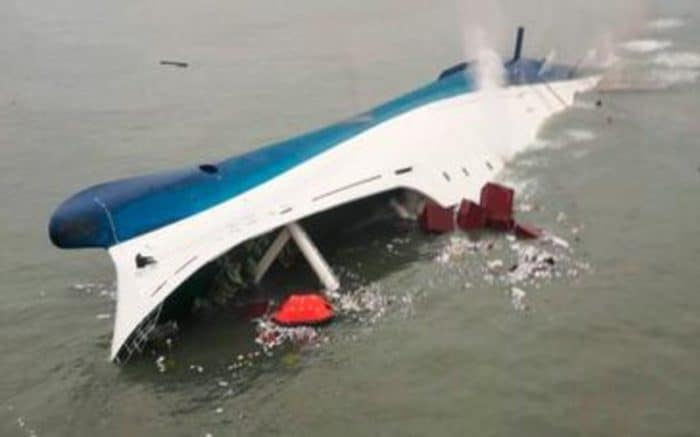
In the water you want to stay calm. Panicking burns energy and you may need to conserve energy for a long time.
If your boat has capsized in cold water, this presents an additional danger. The human body has a reflex action to gasp in freezing water. If you are submerged it can be incredibly hard to resist this urge and take in water but you need to try. This is called a cold shock response. Your body can acclimate to the cold shock in about 2 to 3 minutes but if this is the time in which most people who fall in cold water drown so you’ll need to be on the ball and do your best to get above water and remain calm if you can. If you are in the water with others and are able to, help as best you can.
If you’re not alone, whether it’s freezing water or not, try to account for everyone and make sure everyone is there and relatively safe.
You need to make sure your own life jacket is on and secure before helping others. You will be better able to assist in keeping everyone safe if you don’t need to worry about yourself as well. Remember, other people may be panicking so even if you feel like you’re safe and a strong swimmer, another person may struggle and impede your ability to stay afloat in a panic. We’ve said it a bunch of times already, but it bears repeating – keep your PFD on. They save lives.
Stay Close to a Boat Capsizing
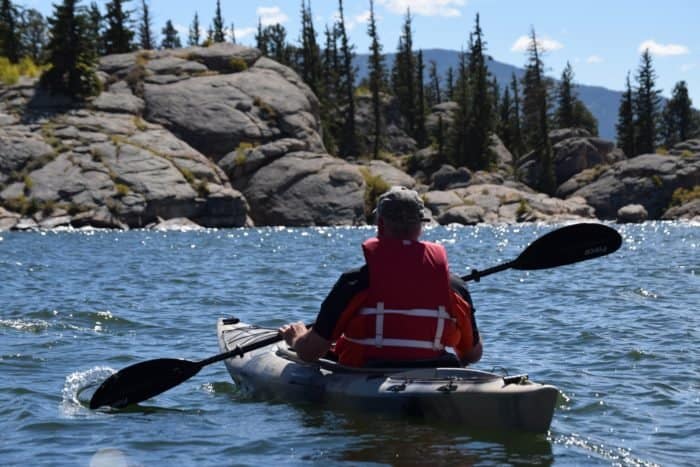
Boats are built to stay afloat and this can still help you even if your boat has flipped or taken on water. Some capsized boats can actually right themselves again. Others may remain afloat upside down, the air trapped inside the hull keeping it floating on the water. Both of these instances can help keep you alive.
There have been many cases when rescuers found capsized boats with survivors sitting on top of the capsized vessel waiting to be saved. Trying to swim to shore is almost never a good idea, even if you can see the shore but especially when you can’t. People often underestimate how far they are from shore when in the water and learn quickly that swimming is a bad idea. Unless you are an extremely strong swimmer and are very close to shore, it is probably a bad idea to try. The more you swim the more likely you are to exhaust yourself quickly.
If you have a smaller boat, especially something like a canoe or a small fishing boat, you may be able to flip the boat back over and bail it out again. Since getting out of the water is a top priority when possible, this is definitely something worth trying with small boats. Obviously with larger boats this may not be an option and if your boat is too large you don’t want to put yourself in danger trying to right it again.
A small capsized sailboat may actually right itself several times in the water. If you stand on the centerboard and grab a rail, you may actually be able to flip it upright again. This will only work with a smaller sailboat but it’s something they actually teach you in sailing classes and is definitely worth trying if it’s an option for you.
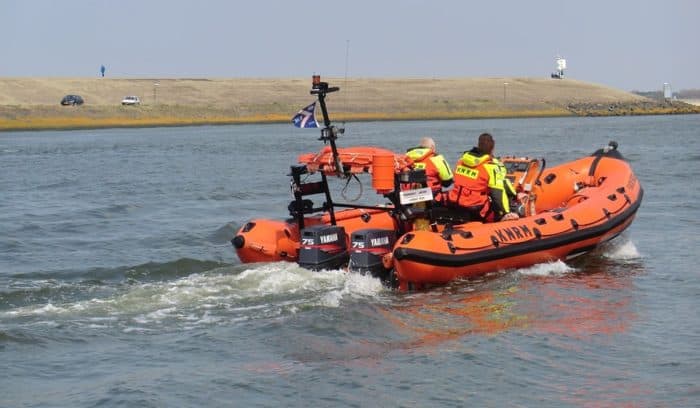
It will be full of water when you right it but it should still be able to remain afloat. At this point you should be able to bail the boat and then get back inside. Enter from the bow or the stern and not from the sides to reduce the risk of capsizing the boat a second time.
Remain near the boat and if possible either climb onto the floating hull or at least use it to support you and remain afloat. This will help you conserve energy and give you a lot more time to wait for rescue.
If you can, you want to get out of the water as soon as you can and onto that boat or other floating debris. Hypothermia is a real danger in water and it doesn’t need to only be freezing cold, just below room temperature.
- At a water temperature of 32.5 degrees, death may occur in under 15 – 45 minutes.
- At a water temperature of 32.5 to 40 degrees, death may occur in 30 – 90 minutes.
- At a water temperature of 40 to 50 degrees, death may occur in 1 – 3 hours.
- At a water temperature of 50 – 60 degrees, death may occur in 1 – 6 hours.
- At a water temperature of 60 – 70 degrees, death may occur in 2 – 40 hours.
What if The Boat Floated Away?
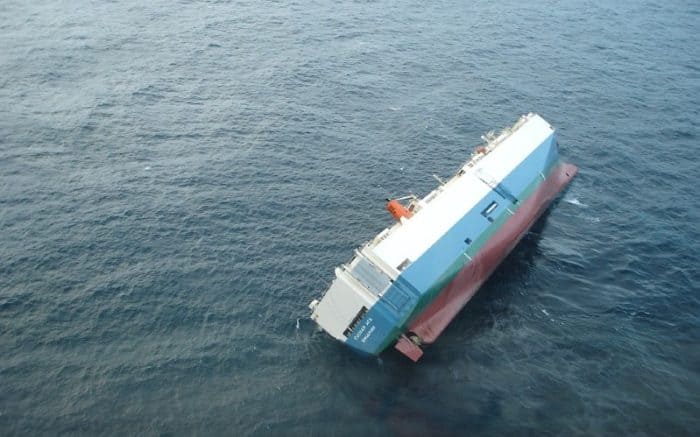
If the boat has floated away without you, perhaps caught in a fast current, don’t try to swim after it. Again, this is going to take away energy you need to stay afloat and could be disastrous. Rescue may come quickly but it may not so you’ll want to conserve any energy you can.
If you are with other people you should remain together and try to help each other stay afloat. Treading water may be necessary but whenever possible try to simply float with the aid of your PFD or any debris that may have come from your boat. Things like paddles, coolers, doors and more can potentially offer buoyancy and help you conserve energy.
Pull your knees close to your chest if you’re alone in the water. You can stay afloat this way and conserve some of your body heat.
Waiting for Rescue After Your Boat Capsized
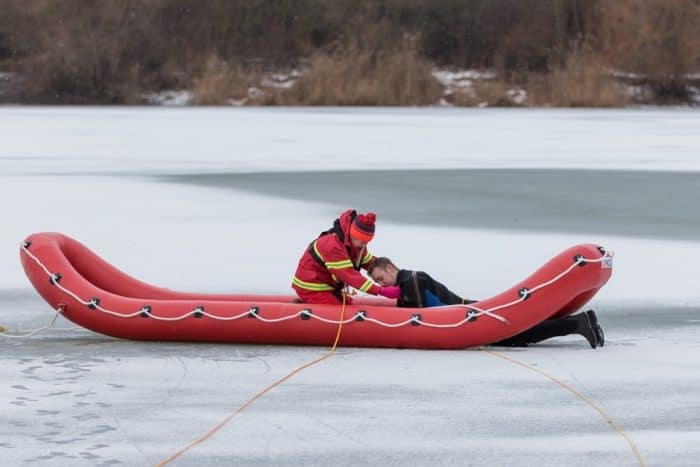
If you have called for help, activated your EPIRB, accounted for everyone on board and are now waiting for help, you just need to wait at this point. Even if you weren’t able to call for help, you’ll still want to stay close to the boat.
The Coast Guard will have a better chance of finding you if you stay put and wait rather than trying to get anywhere else. They will use a system called Search and Rescue Optimal Planning System to try to find you. This takes into account things like weather patterns, the tides, currents, your float plan and so on.
When a rescue boat or helicopter comes within range, having a way to signal them is extremely important. It can speed up the rescue and get you out of the water much sooner. A mirror is a great option here if you don’t have a flare gun available. Anything you can do to make yourself visible and noticeable is a good idea.
If you have a radio with you, keep in touch with rescue personnel for as long as possible if you are able to make contact. If you have not confirmed contact, you may need to continue to repeat your Mayday message until you have confirmed contact with rescuers or another vessel to acknowledge that they know you are in need of help.
Do your best to remain near the boat or any debris to remain visible for as long as possible. Rescue will hopefully come quickly but depending on circumstances it may take quite a bit longer than you want.
What Do You Do When You Get Back to Shore?
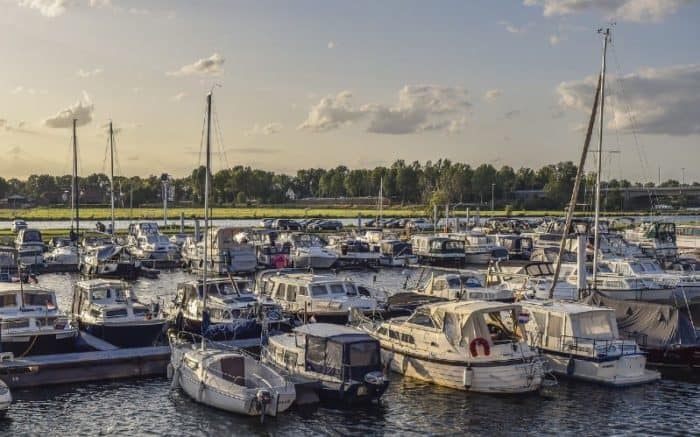
Make sure everyone gets checked out by a medical professional to ensure you’re all okay. After that, you’re going to have the arduous task of consulting your insurance company about what happened and what to do next. This is stressful for a lot of boat owners but remember, safety and survival were the main goals here.
The Bottom Line
You have to try to remain calm when disaster strikes on the water, it’s the only way you’ll get through it safely. The more calm you are the more you’ll be able to react in a level headed manner and do what needs to be done. Also you’ll be able to conserve energy which is vital in cold water to prevent exhaustion. Most fatalities that come from boating accidents are related to drowning from either a fall overboard or a capsized boat.
Do your best to ensure everyone from your boat is safe and accounted for and able to stay afloat with their PFD or some debris from the boat is possible.
Make sure you and everyone on the boat has a PFD and has it on and secure at all times. Place an emergency call with your radio or, in a pinch, a cell phone to let rescuers know what has happened so they can narrow down their search area.
Categories: Boats











